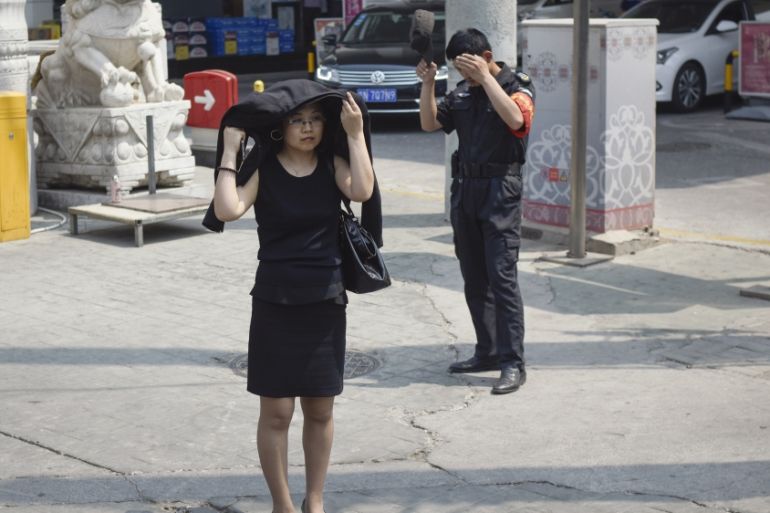Heatwave grips northern China
Yellow alert in force as temperatures approach 40 degrees Celsius in Beijing, Tianjin, as well as parts of Hebei.

Much of northern China is in the grip of a heatwave, forcing authorities to issue a “yellow alert”, the lowest of the four tier warning system.
Temperatures above 35 degrees Celsius began on Thursday and the hot weather has encompassed Beijing, Tianjin, as well as parts of Hebei, Inner Mongolia, Jilin, Liaoning and Shandong.
Keep reading
list of 4 itemsChina evacuates over 100,000 as heavy rain continues to lash south
Asia bears biggest climate-change brunt amid extreme weather: WMO
Photos: Highest-level rainstorm warning issued in south China’s Guangdong
A cold front is expected to sweep in from the northwest during the weekend. This will introduce significantly cooler air, originating over Mongolia and Siberia.
Temperatures will remain in the mid-30Cs throughout the weekend in Beijing. This compares with a mid-May average of 27C.
By Monday, temperatures will have fallen sharply, with a daytime maximum of 20C at most. The dramatic fall in temperature will be accompanied by around 15mm of rain. This is the equivalent of two weeks of rain during a typical May.
A 2015 study of heatwaves in China revealed that the number of deaths due to excess heat had increased by a factor of 20 between the last decade of the 20th century and the first decade of this one.
Interestingly, in the same period deaths from storms, floods and droughts had all decreased.
Whilst changing weather patterns, El Nino and climate change are all thought to have played a part in this dramatic rise, urbanisation has certainly played a major role.
This is borne out by the fact that during heatwaves nighttime temperatures in China have shown particular increases. This is the result of the urban “heat island” effect, whereby daytime heat is absorbed by buildings and roads and then re-radiated during the night.
The old and the young are thought to be particularly susceptible to extreme heat, and with China’s population aging rapidly, heatwave related deaths will become an even greater problem in the decades ahead.
Meanwhile, the hot, settled weather has done nothing for the country’s poor air quality. Much of northern China’s air quality is currently classified as “unhealthy” or “very unhealthy”. In some areas, including Beijing, the air may become “hazardous” before the fresh, clean air from the cold front brings about a temporary respite.